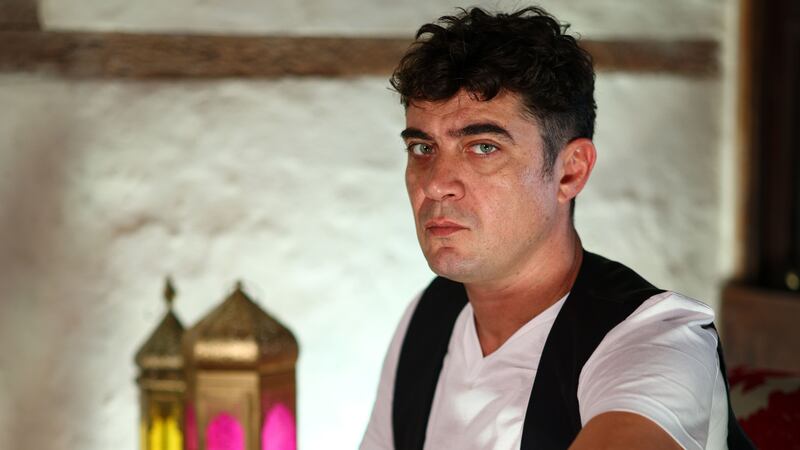Sometimes even experienced civil servants can be sloppy in crafting words. In May 1997, John Holmes, private secretary to Tony Blair, less than a week after Blair became prime minister, wrote him a note suggesting John Bruton was “nice, straightforward and violently anti-IRA, but bound to follow a policy designed to bring Sinn Féin in to the talks ... Bruton is as good a Taoiseach as we are ever likely to get from a British point of view”.
Bruton was replaced as taoiseach the following month and as it turned out, his successor Bertie Ahern did not prove to be a barrier to progress from the British perspective, even if he did not earn the tautological label “violently IRA”. Blair and Ahern worked well together and garnered accolades to the extent that some of Bruton’s admirers think his role in the peace process has been unduly neglected. Graham Spencer’s Inside Accounts (2020) includes an interview with former diplomat and civil servant Dermot Gallagher, who was asked to respond to the idea that “in the narrative of the peace process Albert Reynolds and Bertie Ahern are cited as the key figures. John Bruton is often, not dismissed, but not spoken about in the same way.” Gallagher noted Bruton’s “different background” from Reynolds and Ahern, “but he was determined to move the process forward... determined to drive it on, but personally found it a bit more difficult.”
It was clear the peace process was not going to work if conducted over the heads of those at war and Bruton had to work with an acceptance of that. He was wary of deliberate ambiguity that would resurface to undermine the process, but he also had to embrace aspects of that ambiguity. Bruton’s dislike and distrust of Sinn Féin is well documented in the archives; State papers from the Department of the Taoiseach in 1995 outline his fear that the coalition government he led would become a “hostage” to Sinn Féin as that party would hold “all the cards”, given that IRA violence could be “switched on at any time” if it was considered politically advantageous.
Unionists, Bruton averred, had to have some sense of shared ownership of the process rather than feeling “a deal was being imposed because of an implicit and continuing threat of resumed IRA violence”. He warned Irish civil servants against using “Sinn Féin speak”, but also accepted that decommissioning, rather than being a precondition of talks, could happen in a parallel process “during the talks process at the latest”.
READ MORE
Political leaders often go to their graves with firm labels attached to them, but these can be too sweeping. Bruton was sometimes more nuanced than might be assumed, and perhaps he was not as “straightforward” as Holmes thought.
[ John Bruton obituary: Tenacious former taoiseach who led rainbow coalitionOpens in new window ]
In relation to a possible IRA ceasefire breakdown, he wrote in July 1995 that if this occurred, “it would be helpful if the [Irish] government can simultaneously criticise both Sinn Féin and the UK, thereby impliedly holding the middle ground”. And in launching the Framework Documents with British prime minister John Major in 1995 – labelled the “guiding principles” for peace negotiations – there was an emphasis on North-South institutional arrangements repugnant to many unionists.
[ John Bruton: a life in picturesOpens in new window ]
The following year, in July 1996, Bruton was furious with Major during the Drumcree marching crisis. Bruton, who had been left waiting for two hours to talk to Major on the phone, told him he was “beside himself” at watching nationalist protesters dragged off the Garvaghy Road in Portadown and Orange Order members being permitted to walk down that road. Major, who threatened to terminate the call at the suggestion he had lost control of the situation, complained that the leader of the Garvaghy Road Residents Coalition had a conviction for an IRA bombing. Bruton retorted that loyalist politician David Ervine “was a terrorist too” and his own minister for social welfare, Proinsias De Rossa, had been “interned for a lengthy period”. Bruton subsequently warned against “purgatory periods” delaying dialogue with those associated with violence.
Historian Paul Bew, an adviser to David Trimble during the peace process, suggests Bruton had a “sophisticated and conciliatory” approach to the Northern Ireland question. True, Bruton was a champion of the constitutional nationalist tradition of John Redmond and his quest for home rule, but maybe he was also conscious of the long history of British government elision and ambiguity in Anglo-Irish relations which did much to undermine Redmond from 1914-18.
[ Former taoiseach John Bruton believed Easter Rising unnecessaryOpens in new window ]
There was something naive about Bruton’s assertion that “the home rule path ... would have saved many lives throughout Ireland”, as such a thesis conveniently denied the realities of imperialism, subjection and the continuity of the Irish republican tradition. But it was hardly unreasonable of Bruton to challenge the implications of the contention of those who declared the Republic in 1916 that they would be “oblivious” to the differences between themselves and unionists.

















